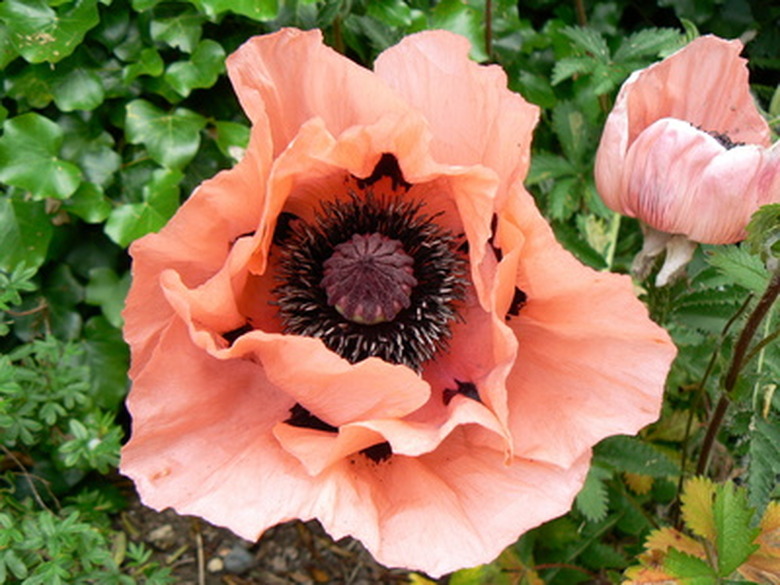Soil Conditions For Growing Poppies
Poppies, exotic and romantic, are great plants for the garden. These easy-to-care-for biennials will beautify the garden for a long time if given their very basic requirements. Site selection and soil preparation are key to poppy culture.
Site Selection
Choose a sunny site that gets at least six hours of sun a day. If you can't provide full sun, give as much as you can and plant near a wall, preferably white, to reflect heat and light. Choose a well-drained site–a sunny slope is ideal.
Soil Preparation
Poppies like perfect drainage. A sandy loam is ideal. Amend heavy soils with sand or finely ground bark. Poppies benefit from a modest amount of water-retention, so a small amount of compost in sandy soils is recommended. Use no more than one-third compost. Mulch lightly with fine bark to shade roots and retain moisture in dry areas and during drought.
- Poppies, exotic and romantic, are great plants for the garden.
- Poppies benefit from a modest amount of water-retention, so a small amount of compost in sandy soils is recommended.
Water
Poppies, native to arid regions like California, the Mediterranean and South-Central Asia, have modest water requirements. Poppies grown in wet climates should be provided perfect drainage. In a dry spell, water deeply at ground-level, trying not to get the leaves wet.
Nutrition
Poppies planted in well-drained soil with modest amounts of compost should not require nutritional supplements at planting. Fertilization should be rare. If needed, use a weak, slow-release flower fertilizer according to label directions.
Maintenance
Clean leaves and petals as they fall. Replenish mulch as needed, but sparingly as mulch can inhibit seed germination. Let seed pods ripen on the stalk before harvesting. Shake pods in place to distribute seeds or save them for sowing at a later time.
- Poppies, native to arid regions like California, the Mediterranean and South-Central Asia, have modest water requirements.
- Shake pods in place to distribute seeds or save them for sowing at a later time.
Companion Plants
Many plants love the same site and soil conditions as poppies and grow very well in close proximity. Shrubby perennials like lavender and rosemary grow very well with poppies. The addition of yarrow, Queen Anne's lace, black-eyed Susan and purple coneflower make a terrific wildflower garden. Use poppies in the rock garden where they add a splash of color near sedums, sempervivums and edelweiss.
